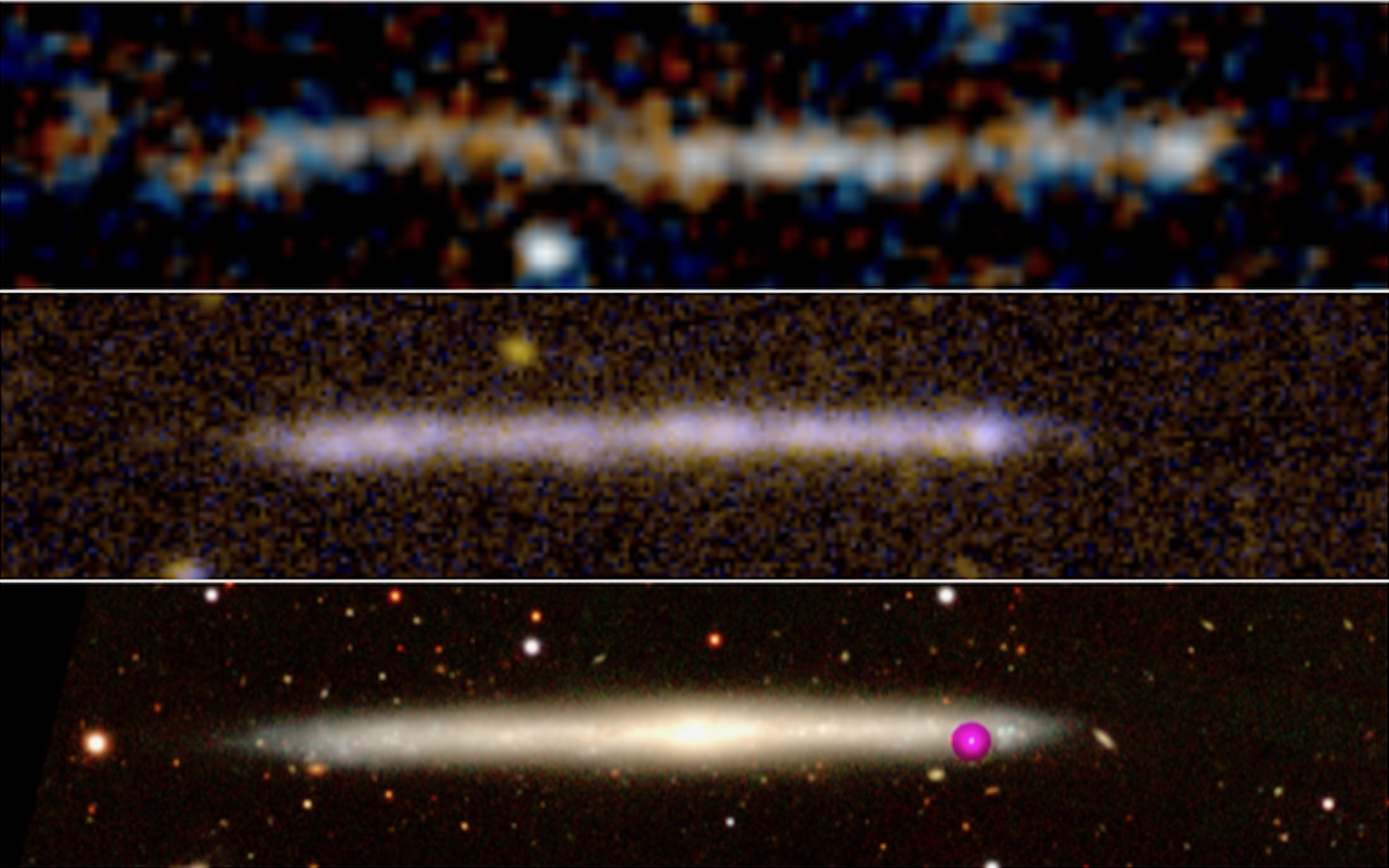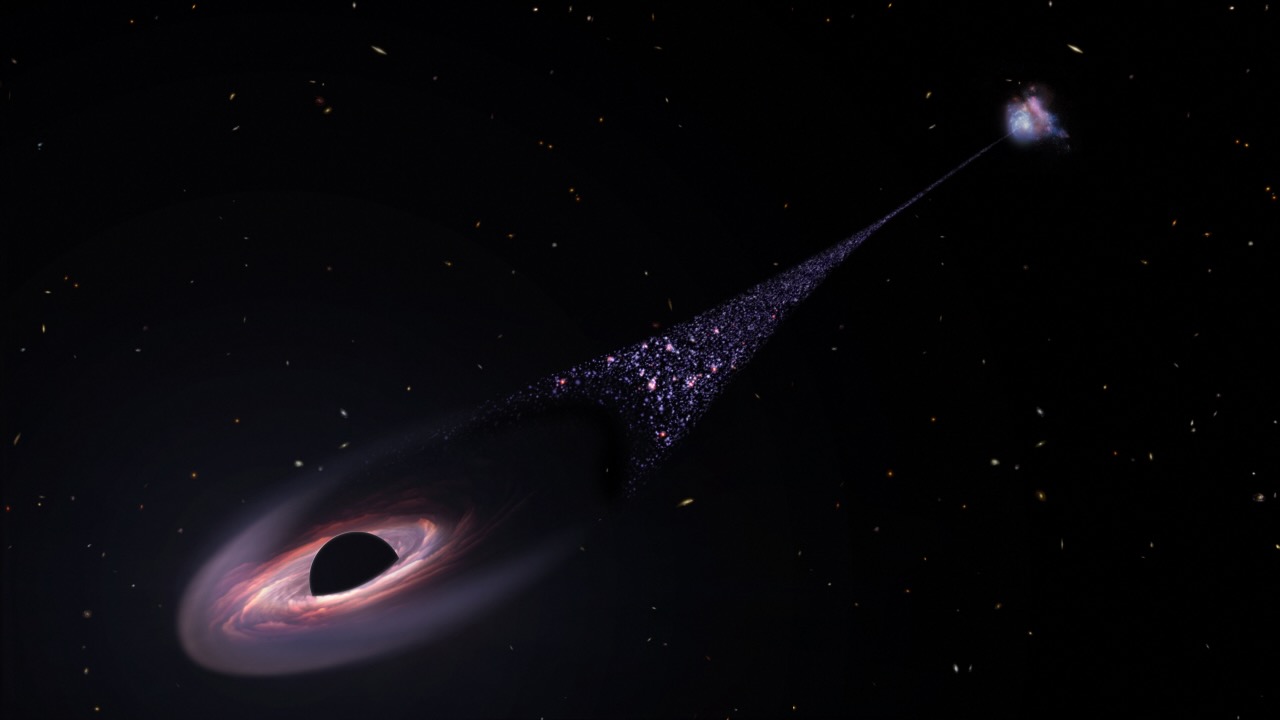
A 200,000-light-year-long chain of stars originally thought to be trailing a runaway black hole may actually be a galaxy in disguise.
Astronomers announced the inferred existence of the rogue black hole, with a mass equivalent to 20 million suns, earlier this year, based on observations by the Hubble Space Telescope. Researchers were astounded by the size of the tail of stars the black hole appears to be dragging along as it speeds away from its home galaxy.
This stellar tail was believed to have been created when the black hole — which is moving so fast it would cover the distance between Earth and the moon in just 14 minutes — forced its way through gas, causing dense regions to build up and birth stars in its wake.
Related: Black holes of the universe (images)

But scientists weren't sure why this black hole isn't greedily swallowing the gas, and creating more of a disturbance, as it moves through it. The posited scenario would also require the galaxy from which the putative supermassive black hole was ejected to be surrounded by a massive amount of gas.
These troubling factors cast some doubt on the "runaway black hole followed by stars" scenario, and multiple teams of astronomers began exploring different, less exotic explanations for the observations.
Now, researchers at the Instituto de Astrofisica de Canarias (IAC) have suggested that the intriguing observation could actually be a galaxy without a bulge seen edge-on. Such thin or flat disk galaxies are actually fairly common in the universe.
"The motions, the size and the quantity of stars fit what has been seen in galaxies within the local universe," team member and IAC researcher Jorge Sanchez Almeida said in a statement.
"It's a relief to have found the solution to this mystery," Sanchez Almeida added. "The new proposed scenario is much simpler. In one sense it is also a pity, because the existence of fleeing black holes is expected, and this could have been the first one to be observed."
To vet their interpretation of the Hubble observations, the team compared the supposed tail of stars to a well-studied bulge-less galaxy called IC5249. Located near our own Milky Way, this thin galaxy has a mass in stars similar to the "tail" that Hubble observed. The observations of the two different objects — the supposed runaway black hole's tail and IC5249 — were in surprising agreement.
"When we analyzed the velocities of this distant structure of stars, we realized that they were very similar to those obtained from the rotation of galaxies," said fellow IAC researcher and team member Mireia Montes. "So we decided to compare a much closer galaxy and found that they are extraordinarily similar."
The relationship between the mass of what the team assumed to be a flat galaxy and the maximum velocity of its rotation convinced the team that the supposed "tail of stars" is actually a galaxy behaving like a galaxy. It is unlikely this conclusion will dilute interest in the object, however.
"It is an interesting object because it is quite a large galaxy at a very large distance from Earth, where the majority of the galaxies are smaller," said IAC astronomer Ignacio Trujillo.
The team's research has been accepted for publication in the journal Astronomy and Astrophysics.
Follow us on Twitter @Spacedotcom or on Facebook.







